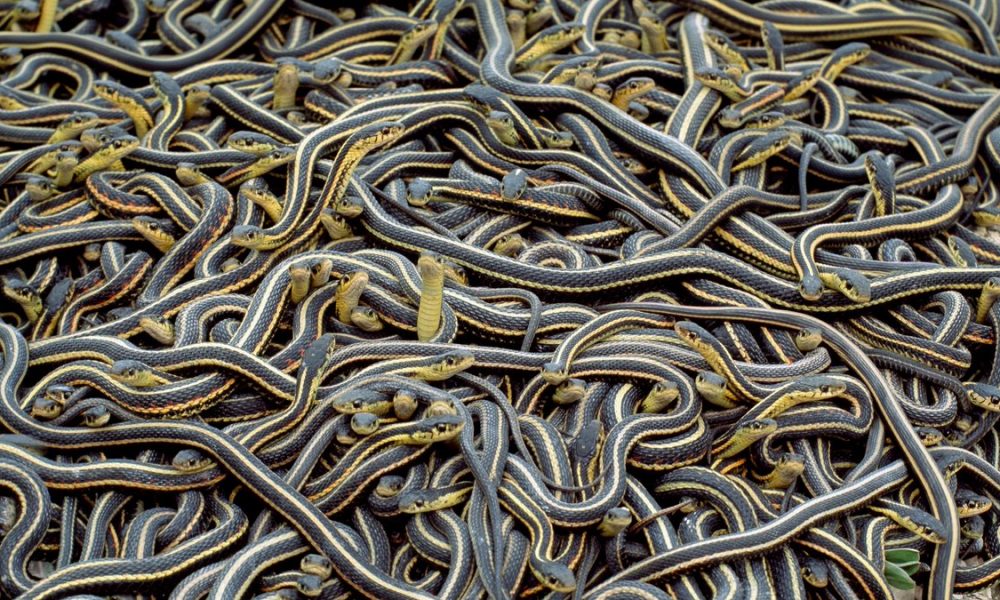

Unlike the pit viper, the coral snake has a small head, round pupils, and a slender body. This fairly small, secretive relative of the cobra has black and red rings separated by yellow rings, and a black snout. The sixth venomous snake in Alabama is the coral snake. This group includes the eastern diamondback rattlesnake, timber rattlesnake, pigmy rattlesnake, copperhead, and cottonmouth. All pit vipers give birth to their young. Pit vipers are also characterized by having retractable, hollow fangs near the front of the mouth.

While all pit vipers have wide, triangular heads, some nonvenomous snakes share this characteristic. Pit vipers have vertical or “cat-like” pupils, thin necks, and heavy bodies. These pits are used to detect heat and improve the snakes’ accuracy in striking warm-blooded prey. Pit vipers get their name from the presence of pits on both sides of the face between the eye and nostril. There are several general rules that are useful in field identification.įive of the six venomous snakes in Alabama are in the pit viper group. Since snakes are helpful to humans, as well as being a part of our natural environment, it is important that we learn to distinguish venomous and nonvenomous varieties. While there is an Alabama snake called the coachwhip, it is nonvenomous and does not use its tail as a whip. The coachwhip snake is said to chase a person and use its tail to whip them to death. When the victim is overtaken, the hoop snake is said to use its tail as a deadly stinger. As you might guess, the hoop snake is reported to take its tail in its mouth and roll after an intended victim in hula hoop fashion. Many snake myths are comical, such as the myth about the hoop snake (a name applied to rainbow snakes and mud snakes) and the coachwhip snake. If the snake is on dry leaves, this sound may be similar to that produced by a rattlesnake. When threatened, many snakes vibrate the tail rapidly.
#Pictures of lots of snakes skin
However, it will not break the skin and there is no danger. Some snakes, if held, will push the tip of the tail against your hand. The tail of a snake is not a venomous stinger. It uses the chemicals in the air and on the objects it touches to help identify potential food sources, enemies, and other objects in its environment. In many ways, a snake flicking its tongue is like a dog sniffing the air. In reality, snakes use their tongues to help identify prey and other surrounding objects. In many of these myths, the snake’s tongue and tail are said to have stinging capabilities. The mysterious and sometimes frightening behavior of snakes has resulted in many myths about these legless reptiles. During times of prolonged cold, snakes won’t be active at all. On cool days, snakes may look for sunny areas, where they will coil and warm up. On days when it is very hot, snakes are likely to seek shelter in shady areas or in dens. This means that their body temperature is regulated by factors such as the air temperature or exposure to sunlight. Like other reptiles, snakes are cold-blooded. Their bodies are simply not designed for climbing, and they spend most of their time on the ground. Stout, heavy-bodied snakes, such as the eastern diamondback rattlesnake and other pit vipers, are poor climbers.

More often than not, when someone in Alabama finds a snake or shed snake skin in the attic, it is some type of rat snake. Some snakes, the gray rat snake for example, are excellent climbers. Others, including the garter snake, give birth to a writhing mass of babies. Most snakes, such as the common kingsnake, bury their eggs under loose dirt or in decaying logs, leaving the young to hatch and fend for themselves. Since the majority of snakes in Alabama are nonvenomous and pose no threat to humans, their varied feeding habits make them valuable to have around for rodent and insect control. These feeding habits apply to venomous and nonvenomous snakes.

Smaller snakes feed primarily on insects, earthworms, and small vertebrates they can overpower. (Photo credit: Wendy VanDyk Evans, ) Snake Factsĭepending on the species, larger snakes may feed on rodents, fish, frogs, lizards, and other snakes. Gray rat snake, a common nonvenomous species


 0 kommentar(er)
0 kommentar(er)
